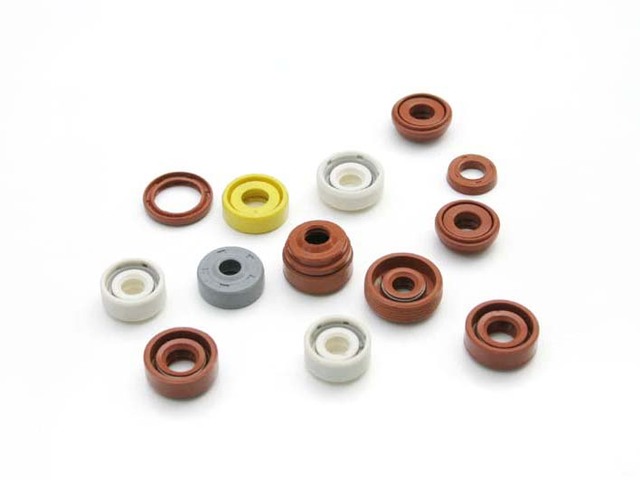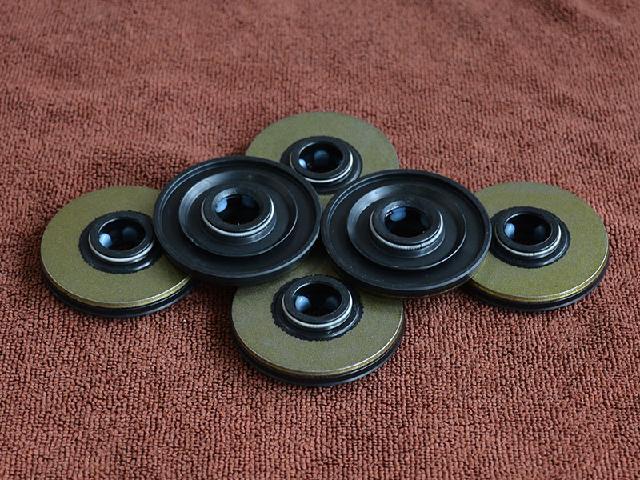What are high-efficiency Rubber oil seals and what do they do? Rubber oil seals are used to keep oil and other fluids inside the engine while preventing them from leaking. They are usually made of rubber, but can also be made of other materials such as silicone.
Introduce
1.1 What is a rubber oil seal
It is a device used to prevent oil leakage. It’s a piece of rubber placed around a metal rod designed to keep the oil inside the machine.
1.2 Types
Oil seals are an important part of many machines and equipment. There are different types of rubber oil seals, each with advantages and disadvantages. Some oil seals are designed for high pressure and high temperature applications, while others are better suited for low pressure and temperature environments. It’s important to choose the right one for your application, otherwise you may run into issues like leaks.
1.3 Working principle
A high-efficiency Rubber oil seal is a device that prevents oil from leaking from the engine. It consists of a rubber disc sandwiched between two metal plates. When the engine is running, oil pressure pushes the rubber disc against the metal plate, creating a seal. If the engine oil pressure drops, the rubber disk will flex and the seal will rupture, allowing oil to leak.

Benefit
2.1 What are the benefits of using rubber oil seals
A high-efficiency Rubber oil seal is a device used to prevent oil and other fluids from escaping from a machine. There are many benefits to using rubber oil seals, including:
1. Reduce machine wear.
2. Reduce leakage.
3. Improve efficiency.
4. Extend the service life of the machine.
5. Reduce emissions.
2.2 How to help keep the engine running
Rubber oil seal is an important part of the engine. It helps keep your engine running by preventing oil leaks. The seal is made of durable rubber that can withstand high temperatures and pressures.
2.3 What are the other benefits
A high-efficiency Rubber oil seal has many other benefits besides preventing oil spills. For example, they can help reduce noise and vibration, and they can also help keep out dust and other contaminants. Additionally, rubber oil seals can be customized to fit a variety of different applications. This makes them a versatile and cost-effective option for many businesses.
How to choose
3.1 How to determine the right rubber oil seal for your application
There are a few things to consider when choosing the right rubber oil seal for your application. The first thing to consider is the type of fluid that will pass through the seal. Seals should be selected based on fluid type, not mechanical type. Also, the size and shape of the seal should be considered. The seal should be sized appropriately to fit the opening to be sealed. Finally, the environmental conditions in which the seal will be used should be considered. Seals should be able to withstand the heat, cold and chemicals present in the environment.
3.2 What factors need to be considered in the selection
Selecting a high-efficiency Rubber oil seal requires consideration of several factors: the environment in which the seal will operate, the type of fluid flowing through the seal, and the size and shape of the seal. You also need to ensure that the seal material is compatible with the fluid, and the temperature range over which the seal will operate.
3.3 What are the most important considerations
There are a few key things to keep in mind when selecting a rubber oil seal for your application. The most important consideration is the application itself – you need to ensure that the rubber oil seal is compatible with the type of fluid it is sealing. Other factors to consider include the operating temperature range, the size and shape of the seal, and the type of material of manufacture.
What are the installation steps
4.1 What is the purpose of the rubber oil seal
The role of the high-efficiency Rubber oil seal is to prevent oil from leaking out of the engine. Installation involves several steps and it is important to follow them correctly to ensure an effective seal. First, the old seal must be removed. This can be done with a seal removal tool or with a chisel and hammer. Next, new seals must be installed. This can be done using a seal installation tool or by hand. Finally, the seal must be lubricated. This can be done by using a seal lubricant or oil.
4.2 What are the different types
There are different types of rubber oil seals, and the specific steps for installing a rubber oil seal vary depending on the type of seal being installed. In general, though, the steps for installing a rubber oil seal include removing the old seal, cleaning the surface to which the seal will be installed, applying sealant to the surface, installing the new seal, and pressing it into place.
4.3 What are the steps to install the rubber oil seal
Oil seals require several steps. The first step is to remove the old stamp. The next step is to clean the area around the seal where the new seal will be installed. The final step is to install the new seal.
4.4 What are the benefits of using oil seals
Installing an oil seal is a relatively simple process that can provide many benefits to your vehicle. These seals help keep oil and contaminants out, which helps extend the life of your engine. They also help reduce noise and vibration for a more comfortable driving experience. Additionally, rubber oil seals can help improve fuel economy by reducing engine drag.
Oil seals are an important part of many machines and equipment. They are used to keep out oil and other liquids and to keep out dirt and contaminants. Efficient Rubber oil seal is an oil seal made of rubber. They are used in a variety of applications including automotive, aerospace, and industrial. As an Oil seal manufacturer, KNT welcomes your inquiries at any time.
Related Products

Rubber oil seal










